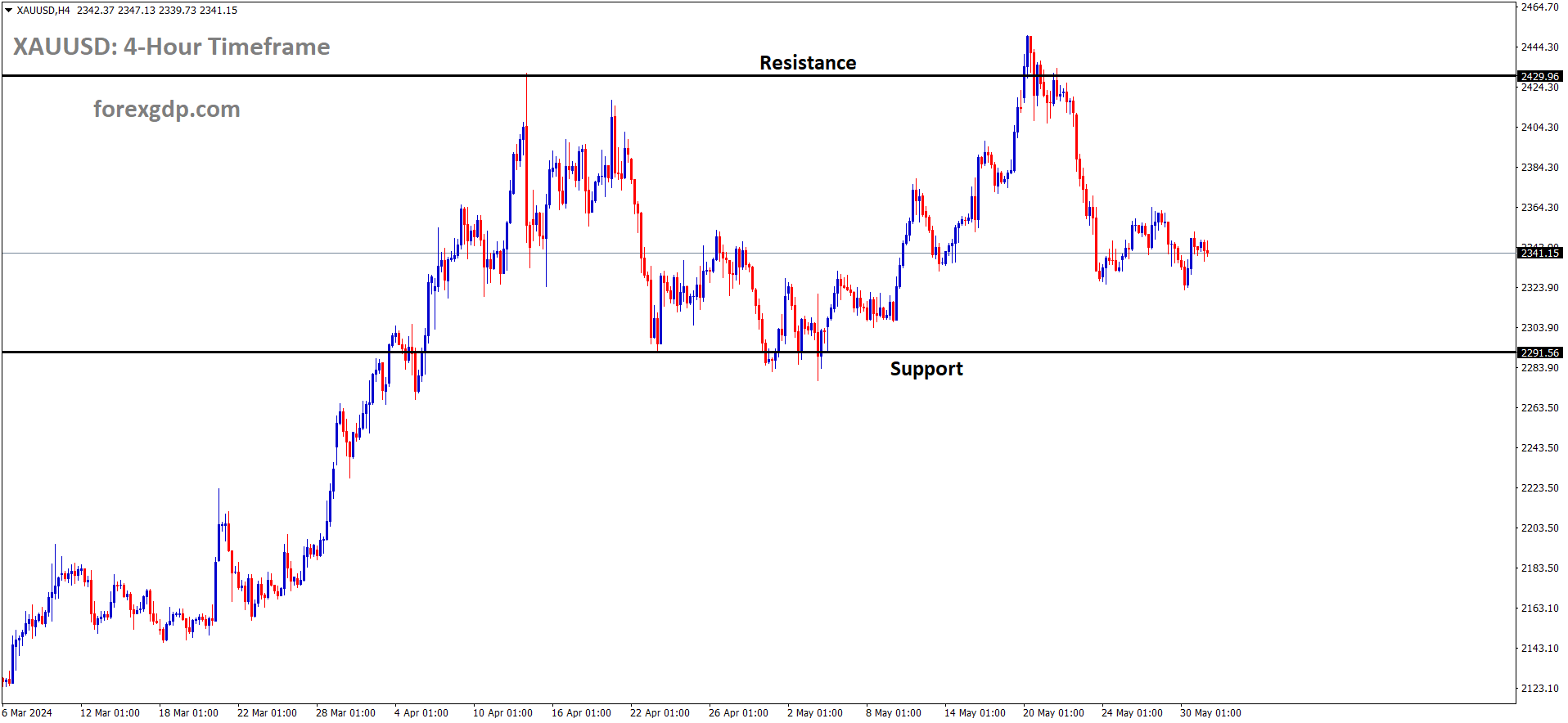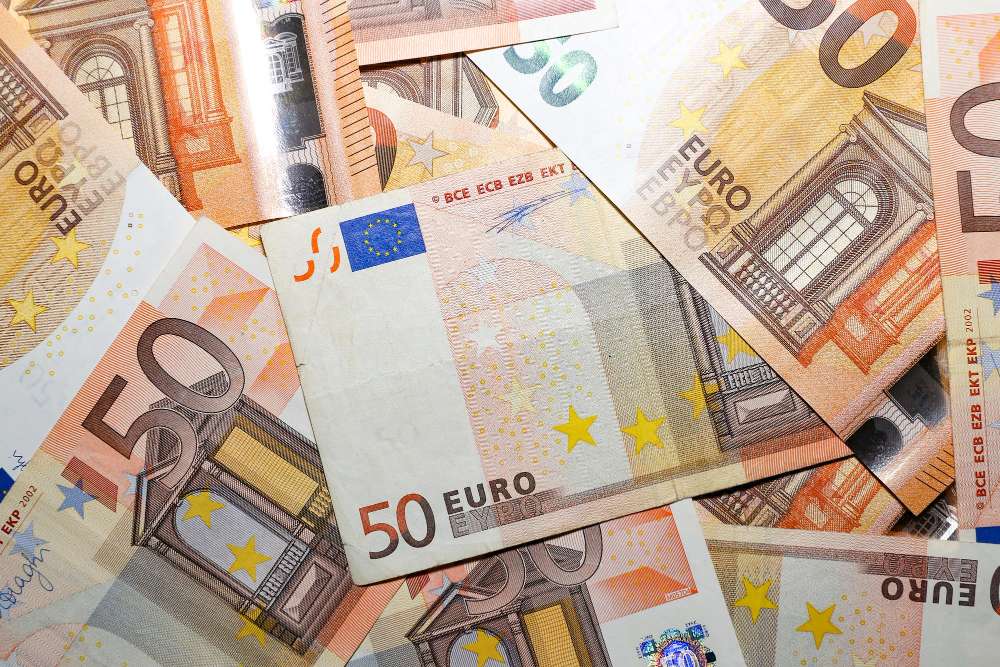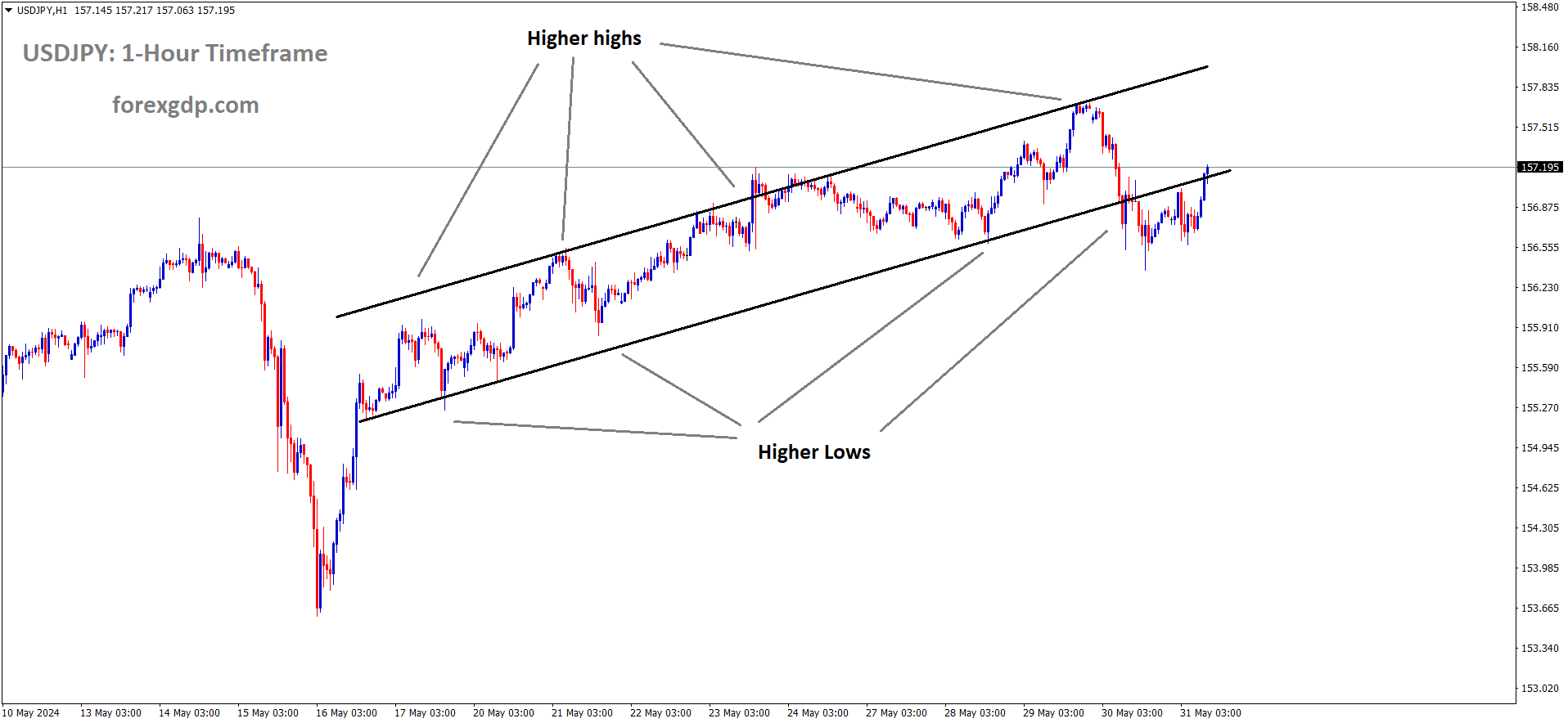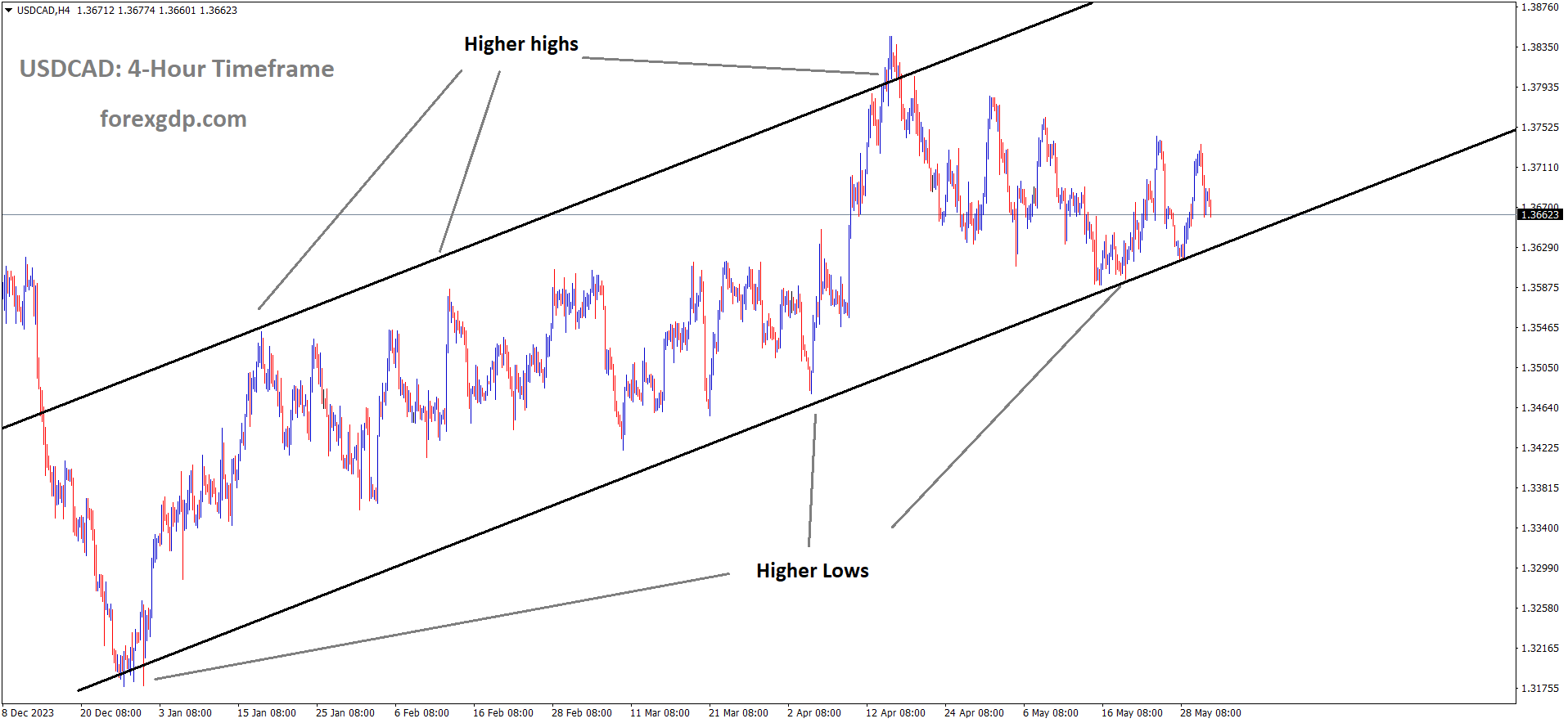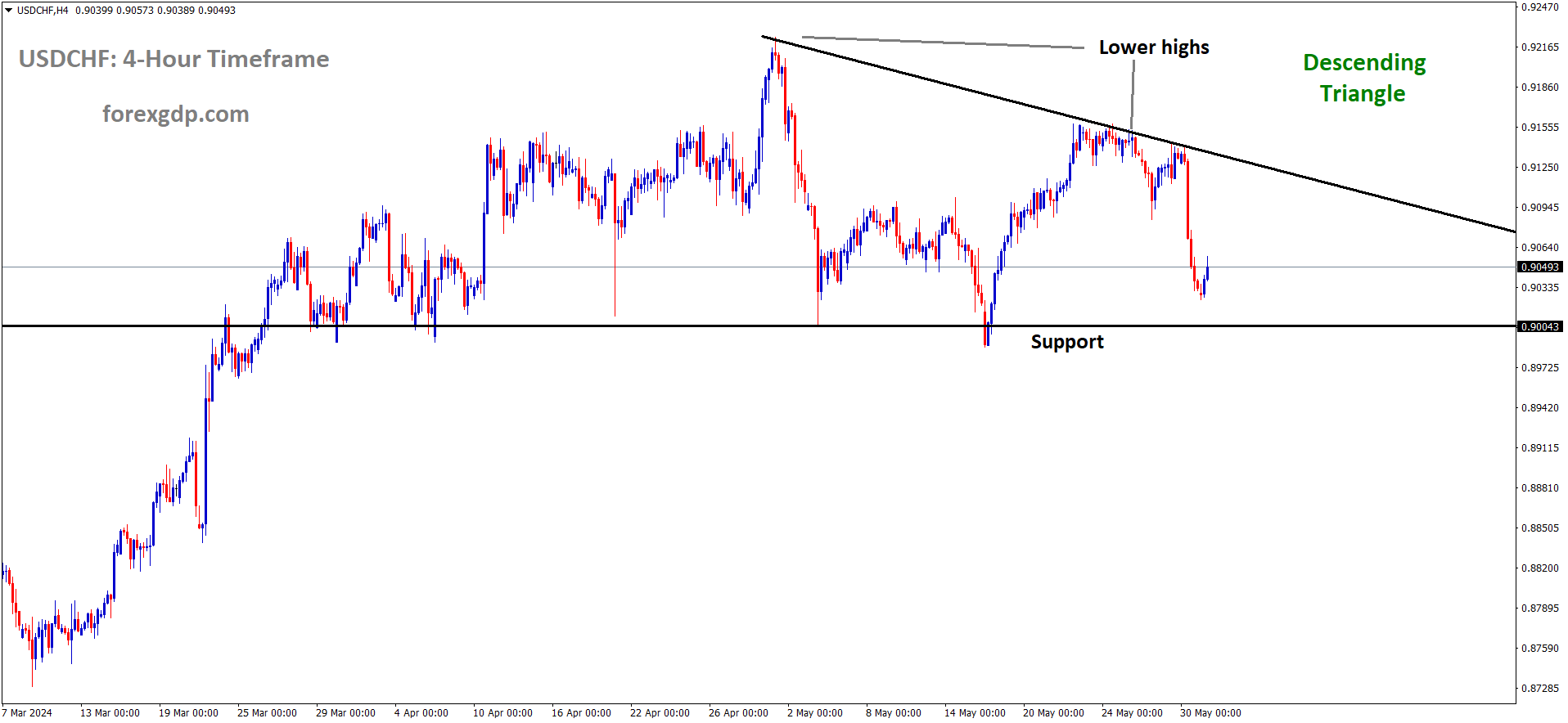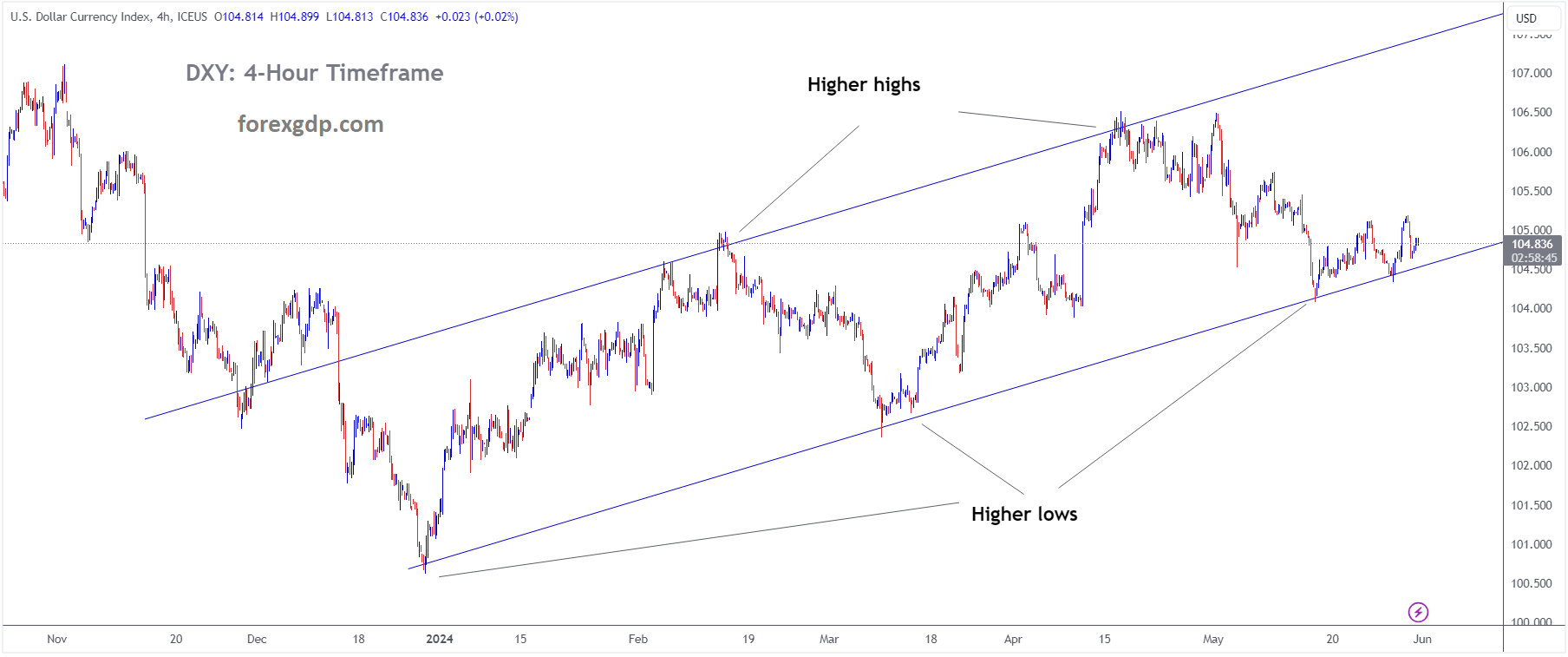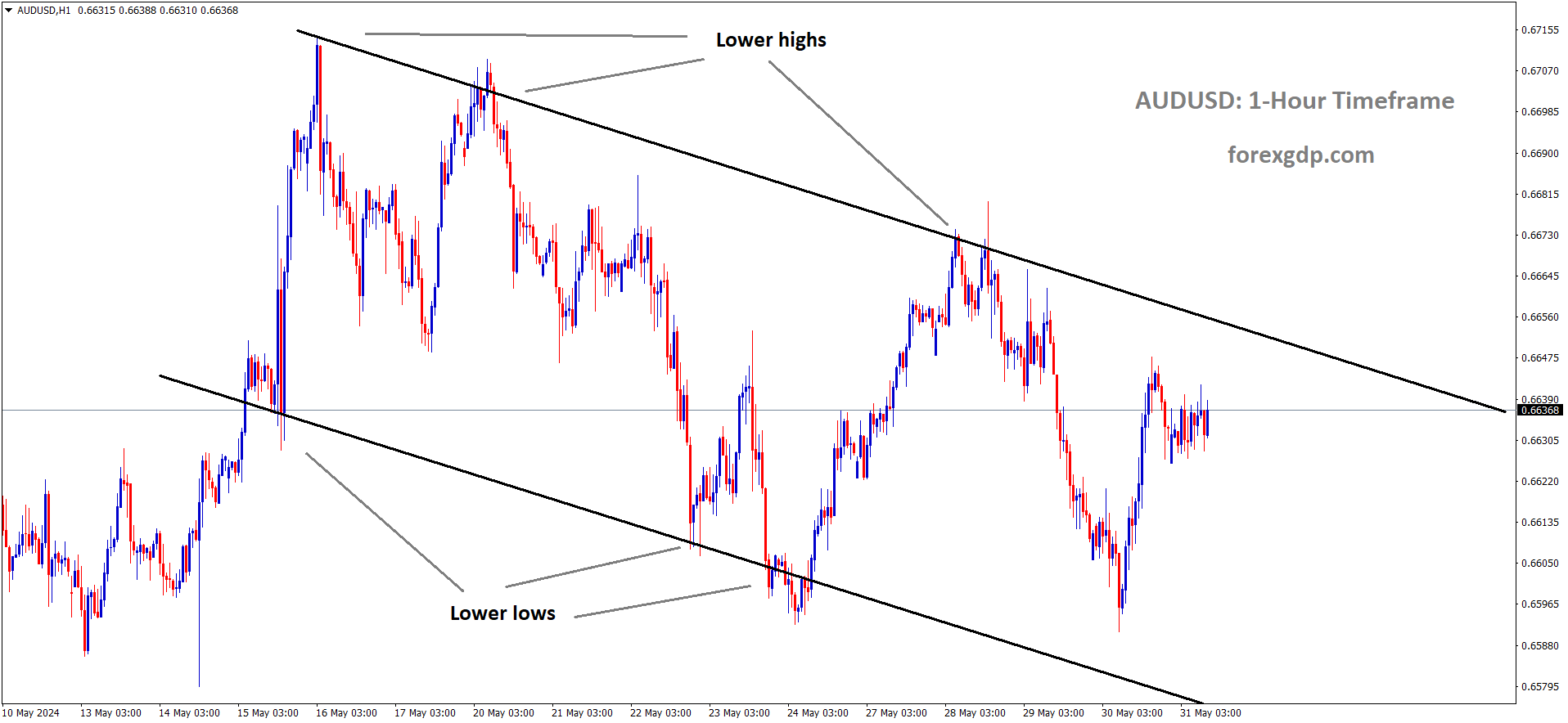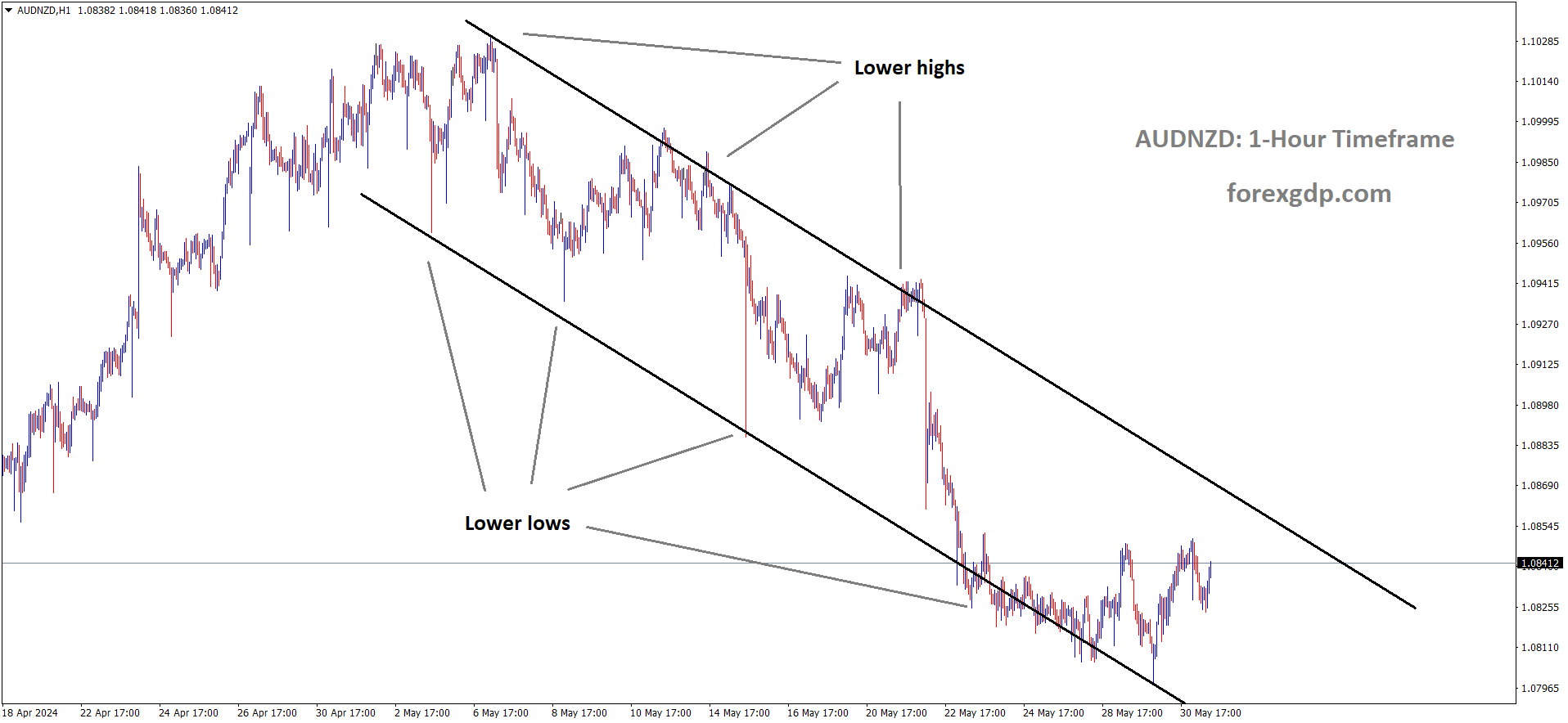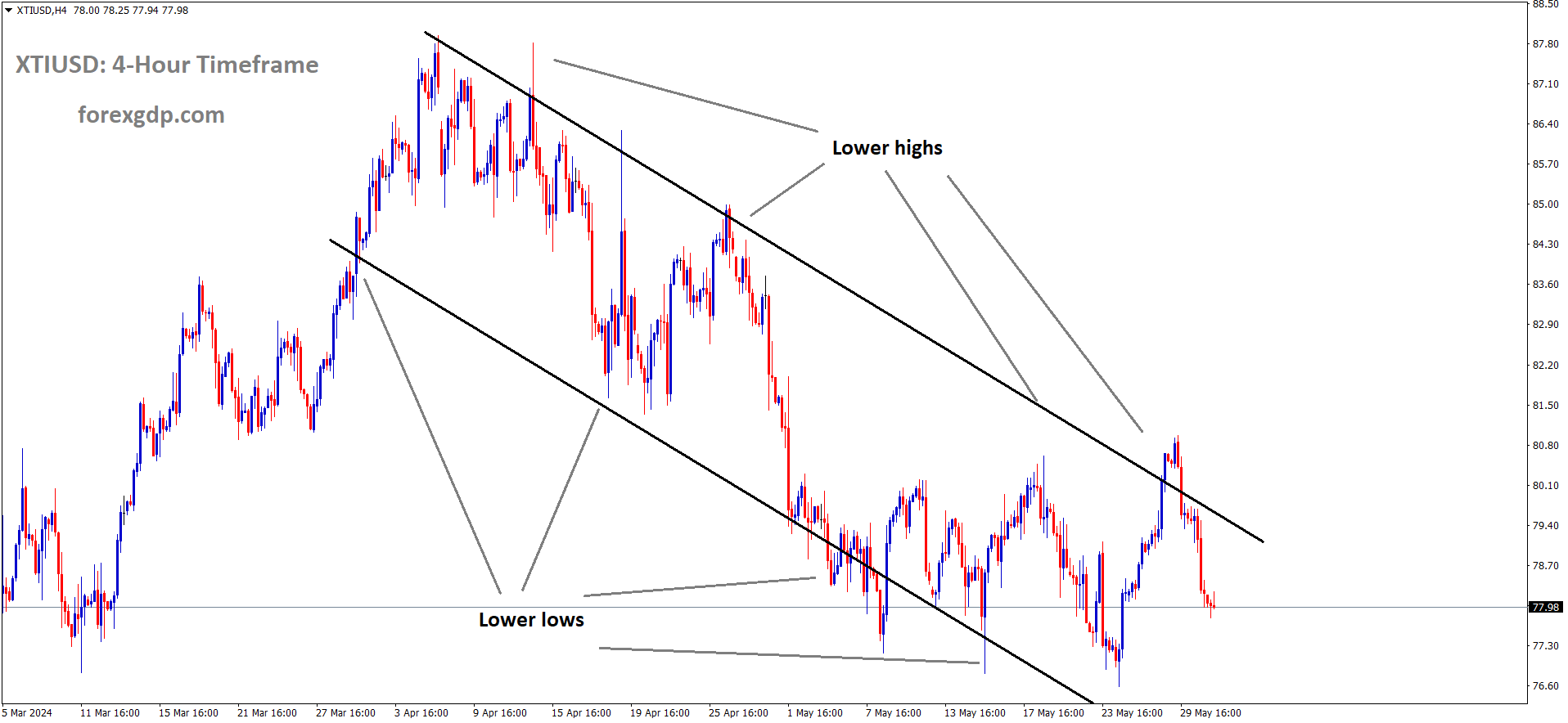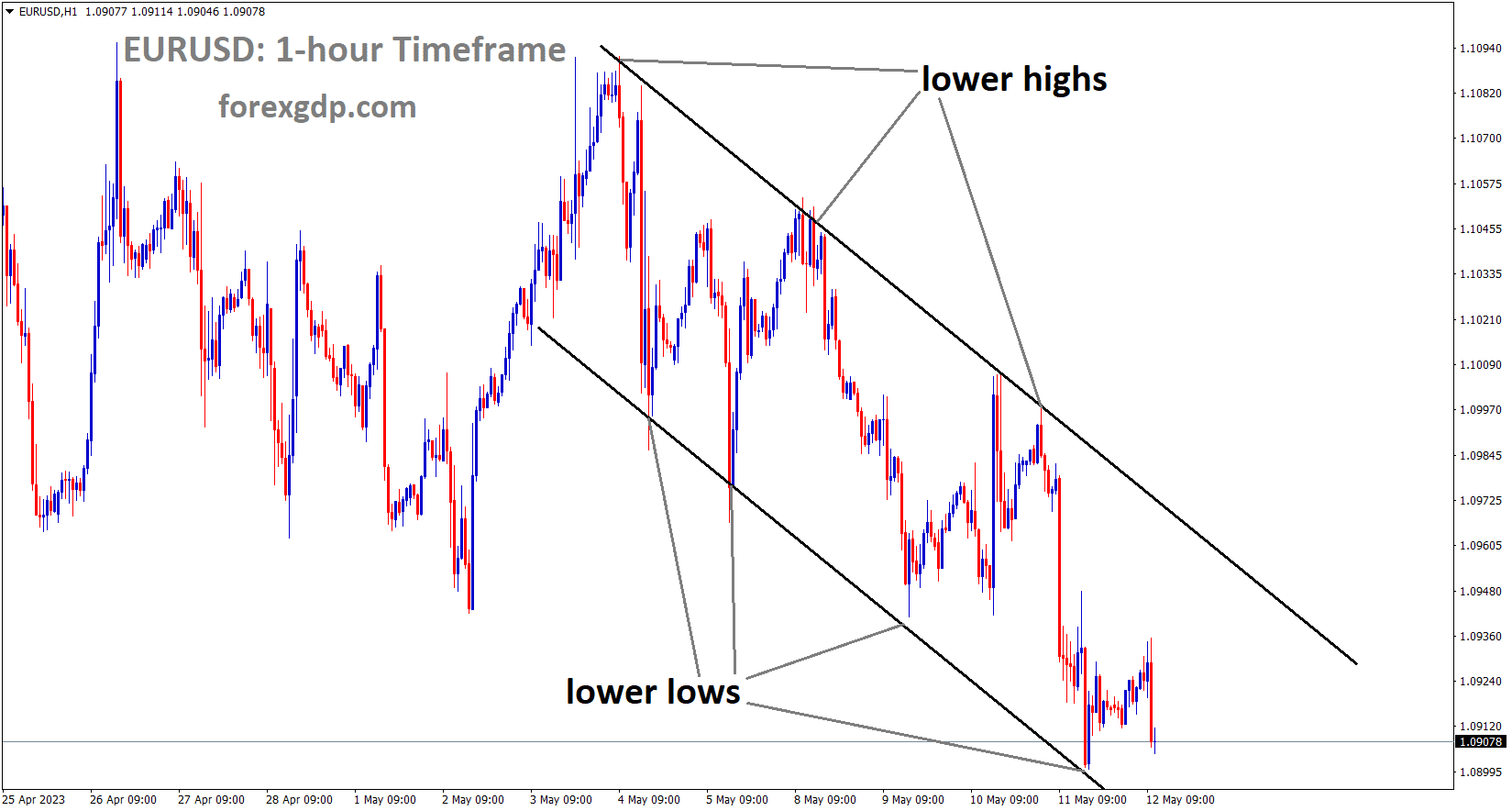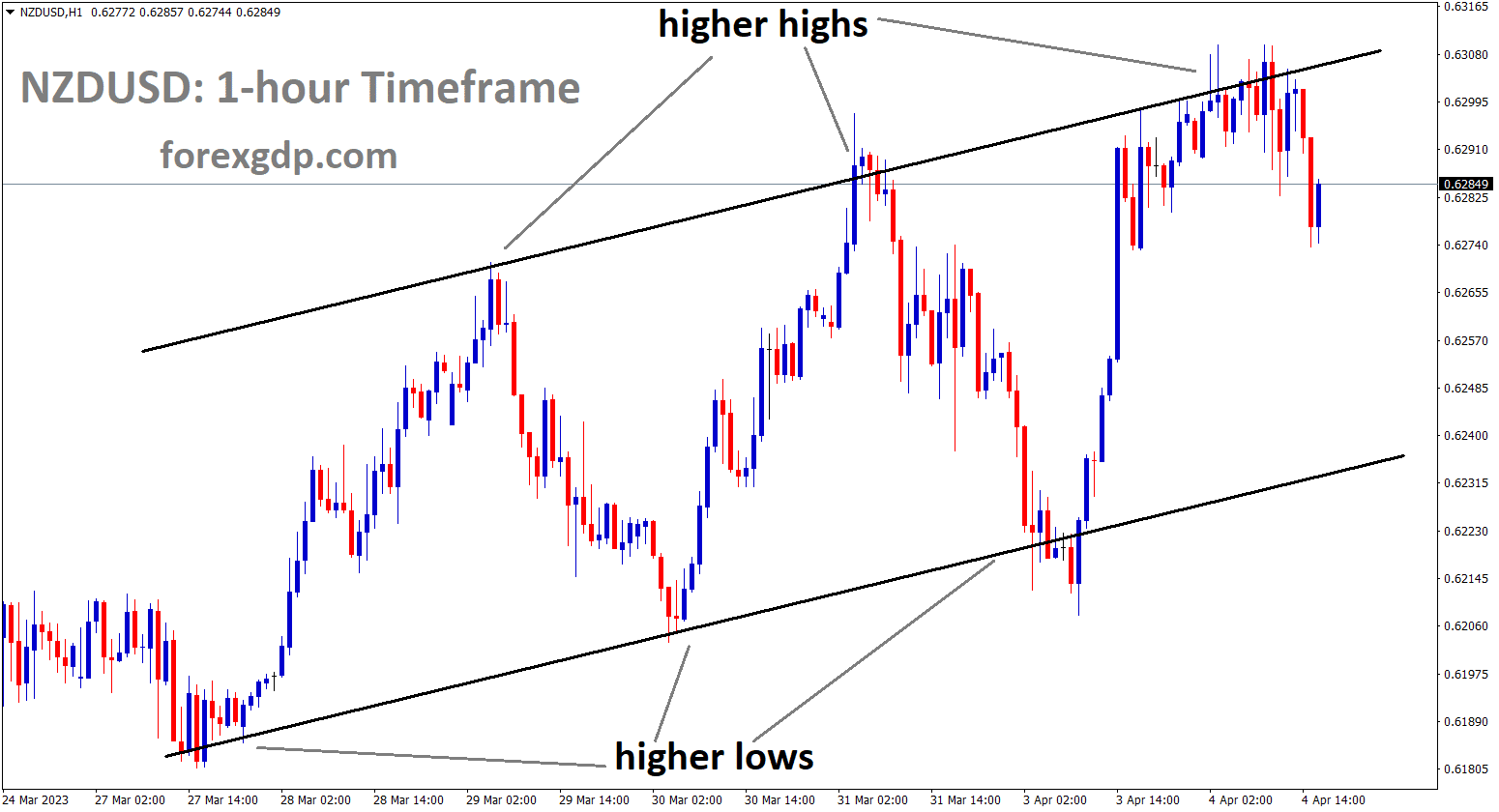GBPUSD – Pound Sterling Dips as Traders Approach US Core PCE Inflation Cautiously
The GBP pairs are moving downwards ahead of Election in the UK in July Month. The Polls suggested Labour party comes into charge after the 15 years of Conservative party in the UK. Ahead of US Core PCE index scheduled today, GBP showing little flat against USD.

GBPUSD is moving in the Symmetrical triangle pattern and the market has fallen from the top area of the pattern
Market participants are eagerly awaiting the core PCE inflation data, which serves as the Federal Reserve’s (Fed) preferred inflation gauge. Projections suggest a steady growth of 0.3% on a monthly basis and 2.8% annually. This report holds considerable significance as it could offer crucial insights into the Fed’s stance on potential rate adjustments.
Should the core PCE data align with expectations, it is less likely to sway the Fed towards rate cuts in September, as policymakers have indicated a preference for sustained inflation declines before considering policy normalization. However, an inflation reading surpassing expectations could delay rate cuts until November, while weaker figures may bolster expectations of a September rate cut.
In other market movements, the Pound Sterling retreated to 1.2720 against the US Dollar (USD). Despite the Cable’s struggle to extend its recovery, the US Dollar found stability following a sharp correction triggered by the downward revision of US Q1 Gross Domestic Product (GDP) data on Thursday. The revised GDP figures, indicating slower economic expansion at 1.3%, weighed on the US Dollar, prompting speculation of a greater than 50% chance of Fed rate cuts in September.
Fed policymakers have reiterated their commitment to maintaining current interest rates until substantial evidence emerges indicating a sustainable return of inflation to the desired 2% rate. Dallas Federal Reserve Bank President Lorie Logan acknowledged the slower-than-expected path to achieving this target but deemed it premature to consider rate cuts at present.
On the UK front, economic prospects brightened following a Lloyds Bank survey, which highlighted easing price pressures and strong expectations of an earlier interest rate reduction by the Bank of England (BoE), leading to the highest business optimism levels since November 2015. However, political developments surrounding upcoming elections, with exit polls favoring the Labour Party after nearly 15 years of conservative-led governments, contribute to market volatility.
While the Pound Sterling’s short-term performance may be influenced by election expectations, its impact on monetary policy is expected to be limited. Nonetheless, a potential change in economic outlook could arise if the Labour Party assumes power, although their fiscal policies are projected to remain conservative to mitigate upward pressure on prices.
XAUUSD – Gold Price Edges Up Before US PCE Data
The Gold prices are moving lower ahead of US Core PCE index data scheduled today. US Q1 GDP came at 1.3% QoQ versus 1.6% is expected and 3.4% printed in the last quarter makes a pull down for USD against Gold last day. Israel said they are fully take over the land of Gaza and some of Egypt Borders, it may be complicate to deal with this area to Egypt .
XAUUSD is moving in the Box pattern and the market has fallen from the resistance area of the pattern
On Friday, the price of gold (XAU/USD) experienced a modest uptick, propelled by a weakening US dollar (USD) and declining US yields. Traders are increasingly betting on the possibility of interest rate cuts by the Federal Reserve (Fed) this year, particularly in light of recent softer US GDP data. Additionally, geopolitical tensions and conflicts in the Middle East have contributed to gold’s appeal as a traditional safe-haven asset.
Later in the day, gold traders will closely monitor the release of the US April Core Personal Consumption Expenditures Price Index (Core PCE), which serves as the Fed’s preferred inflation metric. Projections suggest that the Core PCE figure will indicate a month-on-month increase of 0.3% and a year-on-year increase of 2.8% in April. Should the inflation data exceed expectations, it may lend some support to the US dollar and potentially limit the upside for gold prices.
In the realm of geopolitical developments and economic indicators, the following events have influenced market sentiment:
– Israel’s military has declared effective control over Gaza’s entire land border, including a buffer zone along the border with Egypt, a move that could complicate its relations with Egypt, according to reports from the Guardian.
– The second estimate of US Gross Domestic Product (GDP) for Q1 revealed that the economy expanded at an annualized pace of 1.3%, down from 1.6% in the previous reading, aligning with market expectations.
– US weekly Initial Jobless Claims for the week ending May 25 rose to 219K, exceeding the market consensus of 218K and up from the previous week’s 216K.
– Chicago Fed President Austan Goolsbee highlighted housing inflation as a significant factor in price growth and noted the robustness of the US labor market.
– Atlanta Fed President Raphael Bostic indicated that central bankers are unlikely to implement an interest rate cut in July, citing signs of decelerating inflation progress.
– New York Fed President John Williams expressed confidence that inflation, while currently elevated, will begin to decelerate later in the year, as reported by CNBC.
EURUSD – German Retail Sales Dip 0.6% YoY in April vs. 0.3% Prior
The German retail sales printed at -1.2% MoM in the April month versus 1.8% increase in the March month. Annual reading came at -0.60% in the April month versus 0.30% growth in the March month. Euro pairs weakness against the counter pairs after the data published.
EURUSD is moving in an Ascending channel and the market has rebounded from the higher low area of the channel
Official data released by Destatis on Friday revealed that retail sales in Germany experienced a notable decline of 1.2% month-on-month (MoM) in April, following a robust 1.8% increase in March. Market expectations had anticipated a more modest decrease of -0.1% for the reported period.
On an annual basis, retail sales within the Eurozone’s largest economy exhibited a decrease of 0.6% in April, contrasting with the 0.3% growth observed in March.
USDJPY – Tokyo CPI Inflation Rises to 2.2% from 1.8%, Rebounding from 26-Month Low
Japan Tokyo CPI inflation reading came at 2.2% YoY in the May month when compared to 1.8% YoY in the April month. Japanese Yen ticked higher after the reading came at higher since 26 months before. BoJ target of 2% inflation is reaching under the way and soon changes in the Policy may happen if this higher level of reading exists in the upcoming months.
USDJPY is moving in an Ascending channel and the market has rebounded from the higher low area of the channel
Japan’s Tokyo Consumer Price Index (CPI) inflation rose to 2.2% year-over-year in May, up from 1.8% in April. This increase marks a recovery from April’s 1.8%, which was a 26-month low.
Tokyo’s CPI inflation often trends higher than the national-level CPI, which is typically released three weeks later and serves as an early indicator of broader Japanese inflation trends. The Bank of Japan (BoJ) has maintained a highly accommodative monetary policy, partly due to concerns about declining inflation. This cautious stance has prevented the BoJ from raising interest rates and narrowing the wide rate differential between the Japanese Yen (JPY) and other major global currencies.
USDCAD – Approaches 1.3700 Before US PCE, Canada’s GDP
The Canadian PPI data for the month of April came at 1.5% beat the estimate of 0.80% and 0.90% printed in the March month. Today Canadian Q1 GDP QoQ annualised data is expected at 2.2% versus 1.0% printed in the last quarter. BoC rate cuts in the June month is down to 35% from 50% last week due to Domestic data performing well in the Canadian Economy.
USDCAD is moving in an Ascending channel and the market has reached from the higher low area of the channel
The US Dollar (USD) staged a rebound in anticipation of the release of the Federal Reserve’s preferred inflation measure, the Core Personal Consumption Expenditures (PCE) Price Index, scheduled for Friday.
Market sentiment was influenced by the revision of the US Gross Domestic Product (GDP) Annualized growth rate, which was lowered from 1.6% to 1.3% for the first quarter. This downward revision prompted investors to recalibrate their expectations regarding the Federal Reserve’s (Fed) monetary policy stance, introducing uncertainty regarding the likelihood of a rate cut in September. Additionally, the US weekly Initial Jobless Claims for the week ending May 2 increased to 219K from the previous week’s 216K, surpassing the market consensus of 218K.
In Canada, expectations for rate cuts by the Bank of Canada (BoC) in June have diminished following recent data indicating sustained price pressures. April’s producer prices surged by 1.5% from the previous month, following a 0.9% increase in March, nearly doubling the expected 0.8% change. Consequently, interest rate futures now indicate that only 34% of the market expects a 25-basis point rate cut at the BoC’s June meeting, down from 46% a week ago.
On Friday, Statistics Canada is set to release the country’s Gross Domestic Product (GDP) data. The annualized figure for the first quarter is anticipated to reveal a 2.2% expansion, an improvement from the 1.0% growth recorded in the previous quarter.
USDCHF – Dips Below 0.9050 on Weak US Dollar, Strong Swiss Q1 GDP
The Swiss Q1 GDP data came at 0.50% Q1 versus 0.30% QoQ expected, beat the estimates. Annualised data came at 0.60% YoY versus 0.50% YoY forecasted. The Swiss Trade Surplus data came at $4316M in the April when compared to March month printed at $3737M. The Swiss Franc gets double treat yesterday after the Positive data came. The Swiss Franc traded higher against counter pairs after beat estimated values. SNB now close the door for rate cuts in the monetary policy settings due to higher Q1 GDP data printed.
USDCHF is moving in the Descending triangle pattern and the market has reached the support area of the pattern
The decline in the value of the Swiss Franc stems from two primary factors: a significant downturn in the US Dollar and the exceptional performance of the Swiss economy in the first quarter of this year.
This sharp depreciation of the US Dollar can be attributed to the sluggish growth of the United States’ Gross Domestic Product (GDP) in the first quarter. Revised GDP estimates indicate that the US economy expanded at a slower rate of 1.3%, down from the initially reported 1.6%.
The optimism surrounding the US economic outlook, fueled by expectations of a 1.6% GDP growth, has been tempered by this lower-than-anticipated real GDP growth figure. However, it’s worth noting that the impact of the reduced GDP growth rate is expected to be limited as GDP is considered a lagging indicator, reflecting the health of the economy after the fact.
Looking ahead, the US Dollar is poised to remain highly volatile as market attention shifts to the release of the US core Personal Consumption Expenditure Price Index (PCE) data for April. This inflation data, set to be published on Friday, will play a crucial role in shaping speculation regarding potential Federal Reserve (Fed) rate cuts in September. Projections suggest that both annual and monthly core PCE inflation readings will show steady growth, with estimates of 2.8% and 0.3% respectively. Should inflation remain stable, it could dampen expectations for the Fed to initiate interest rate reductions at its September meeting.
Conversely, the Swiss Franc has strengthened following the release of the Q1 GDP report, which exceeded consensus forecasts and surpassed previous readings. The report revealed that the Swiss economy expanded by 0.5%, surpassing both estimates and the prior reported growth of 0.3%. This stronger-than-expected performance has heightened upside risks to inflation, potentially prompting the Swiss National Bank (SNB) to reconsider any plans for subsequent rate cuts.
USD INDEX – US Core PCE Inflation Stabilizes as September Federal Reserve Rate Cut Remains Uncertain
The US Core PCE index data is expected is 0.30% MoM, Core is 2.8% YoY and Headline is 2.7% YoY. US CPI data for the month of April standing at 3.4%, If reading came lower than expected today, then FED have more chances to rate cut in the September month.
USD INDEX is moving in an Ascending channel and the market has rebounded from the higher low area of the channel
The core PCE Price Index, which excludes volatile food and energy prices, holds significant sway over Fed policy decisions regarding interest rates. Projections indicate that the index will exhibit a 0.3% increase on a monthly basis in April, mirroring the growth seen in March. On an annual basis, April’s core PCE is anticipated to expand at a rate of 2.8%, while headline PCE inflation is expected to remain steady at 2.7% year-on-year (YoY).
Earlier in the month, the US Bureau of Labor Statistics reported that the Consumer Price Index (CPI) rose by 3.4% on a yearly basis in April. Meanwhile, the core CPI, which excludes volatile food and energy prices, increased by 3.6% during the same period, down slightly from 3.8% in March.
Analysts at TD Securities provided insights into the forthcoming PCE inflation report, suggesting that based on CPI and PPI data, core PCE inflation likely experienced a further deceleration in April after a robust performance at the beginning of the year. They anticipate the core index to advance by 0.22% month-on-month (m/m), compared to the 0.32% increase seen in March and the core CPI’s 0.29% expansion in April. The initial forecast of 0.25% has been revised downward. Additionally, they project a 0.23% m/m increase in headline PCE, while the supercore, a measure that includes factors beyond the traditional core index, is expected to cool to 0.26%.
AUDUSD – AUD Consolidates Ahead of US Core PCE
The Australian CPI index came at 3.6% YoY in the April month versus 3.5% printed in the last month, Private expenditure index came at 1.0% QoQ versus 0.90% printed in the last month. RBA is clearly focussin on controlling inflation to the target by taking tightening monetary policy settings.
AUDUSD is moving in the Descending channel and the market has reached the lower high area of the channel
Following the release of lower-than-expected NBS Purchasing Managers Index (PMI) data from China on Friday, the Australian Dollar (AUD) exhibited sideways movement. This data is particularly significant for Australia due to the close trade relationship between the two countries, as changes in the Chinese economy can substantially impact the Australian market. However, earlier in the day, the AUD/USD pair had shown strength as the US Dollar (USD) faced challenges stemming from a slowdown in the US economy.
Support for the AUD also came from an acceleration in the monthly inflation rate to 3.6%, raising speculation that the Reserve Bank of Australia (RBA) might consider raising interest rates again. Investors are anticipating that the RBA will maintain elevated rates for an extended period, with the possibility of a rate cut not emerging until May of the following year.
Meanwhile, the US Dollar Index (DXY), which gauges the USD against six major currencies, may experience pressure due to a decline in US Treasury yields. This could be attributed to the downward revision of the US Gross Domestic Product (GDP) Annualized growth rate, from 1.6% to 1.3% for the first quarter. Traders are now focusing on the upcoming release of the Federal Reserve’s preferred inflation gauge, the Core Personal Consumption Expenditures (PCE) Price Index, scheduled for Friday.
– China’s NBS Manufacturing Purchasing Managers Index (PMI) for May dipped to 49.5 from April’s 50.4, missing the market consensus of an increase to 50.5. Additionally, the Non-Manufacturing PMI declined to 51.1 from the previous reading of 51.2, falling short of the estimated 51.5.
– Australia’s Private Capital Expenditure rose by 1.0% in Q1, surpassing expectations for a 0.5% increase and outpacing the previous quarter’s 0.9% uptick.
– Dallas Fed President Lorie Logan reiterated concerns about upside risks to inflation despite recent easing, emphasizing the need for the Federal Reserve to remain flexible in its monetary policy decisions.
– RBA Assistant Governor Sarah Hunter highlighted “inflationary pressures” as a key concern, noting that inflation remains above the target range of 1%-3%, indicating persistent inflationary pressure.
– Australia’s Monthly Consumer Price Index rose 3.6% year-over-year in April, exceeding the expected reading of 3.4% and the previous reading of 3.5%.
– Neel Kashkari, President of the Federal Reserve Bank of Minneapolis, suggested that a rate hike might still be possible, expressing uncertainty about the disinflationary process and predicting only two rate cuts.
– US Housing Price Index (MoM) for March underperformed, with March’s number coming in at 0.1% against 1.2% for February, where 0.5% was expected.
AUDNZD – Rises on Strong Aussie Data, Markets Process NZ Tax Relief
The NZ Government announced NZ$ 14.7 Billion Tax cut package announced in the NZ Budget yesterday. This tax cuts benefits comes from the NZ Government due to no rate cuts expected from RBNZ in this year 2024. Due to strong presence of inflation surrounding in the NZ and no way for rate cuts as per speech from RBNZ, RBNZ Deputy Governor and Assistant Governor .
AUDNZD is moving in the Descending channel and the market has rebounded from the lower low area of the channel
During Thursday’s trading session, the AUD/NZD pair showed upward movement as markets assimilated significant developments in both Australia and New Zealand.
In Australia, the release of robust first-quarter business investment and private capital expenditure figures lent support to the Australian Dollar (AUD). Additionally, on Tuesday, Australia reported inflation figures that exceeded expectations, further strengthening the AUD. This string of positive economic data may prompt the Reserve Bank of Australia (RBA) to adopt a more hawkish stance. Market participants are keenly awaiting the release of Gross Domestic Product (GDP) data on Wednesday for further insights into Australia’s economic performance.
Concurrently, New Zealand’s new government unveiled a substantial NZD 14.7 billion tax cut package targeted at low and middle-income households. This move towards a more lenient fiscal policy has tempered expectations of immediate rate cuts by the Reserve Bank of New Zealand (RBNZ), which could potentially mitigate losses for the New Zealand Dollar (NZD). Although the probability of a rate cut in November has decreased slightly, it still remains around 70% according to market pricing.
CRUDE OIL – WTI Approaches $77.50 Amid US PCE, OPEC+ Meeting
The US EIA reported decline of 4.1 Million barrels ending the Week May 24 and beat the previous reading of -1.9Million barrels last week. OPEC+ is discussing the output cut will extended to 2025, this news dragged the Oil market down against USD.
XTIUSD Crude oil price is moving in the Descending channel and the market has fallen from the lower high area of the channel
Traders are eyeing the forthcoming meeting of the Organization of the Petroleum Exporting Countries and its allies, collectively known as OPEC+, slated for June 2. The online meetings are scheduled to commence at 1100 GMT on Sunday.
According to Reuters, three sources familiar with OPEC+ discussions disclosed on Thursday that the group is crafting a multifaceted agreement to be finalized during Sunday’s meeting. This potential deal could see OPEC+ extending some of its substantial oil production cuts into 2025.
Concerns have been amplified by hawkish remarks from Federal Reserve (Fed) officials, hinting at possible interest rate hikes. The prospect of higher interest rates has cast a shadow over the US economic outlook, dampening crude oil demand.
The US Energy Information Administration (EIA) released its report on oil stockpiles, revealing a decline of 4.156 million barrels in US crude inventories for the week ending on May 24. This figure surpassed expectations, which had anticipated a draw of 1.900 million barrels.
Dallas Fed President Lorie Logan reiterated concerns about potential upside risks to inflation despite recent easing. Logan emphasized the need for the Federal Reserve to maintain flexibility and keep “all options on the table” as it monitors data to determine an appropriate response. Similarly, Atlanta Fed President Raphael Bostic, as reported by Bloomberg on Wednesday, cautioned that achieving the 2% inflation target is not guaranteed and highlighted the broad-based nature of price increases.
As investors brace for the release of the Federal Reserve’s preferred inflation gauge, the Core Personal Consumption Expenditures (PCE) Price Index on Friday, the US dollar (USD) has staged a rebound. However, the decrease in US Treasury yields may temper the USD’s ascent. This could potentially stimulate oil demand, as it becomes more affordable for purchasing countries with alternative currencies.
Don’t trade all the time, trade forex only at the confirmed trade setups
Get more confirmed trade signals at premium or supreme – Click here to get more signals , 2200%, 800% growth in Real Live USD trading account of our users – click here to see , or If you want to get FREE Trial signals, You can Join FREE Signals Now!



